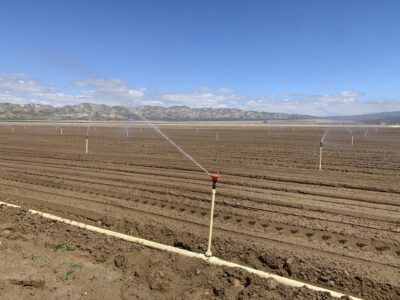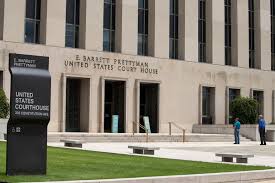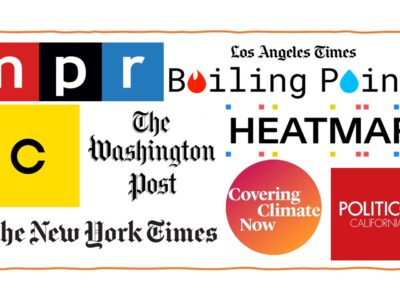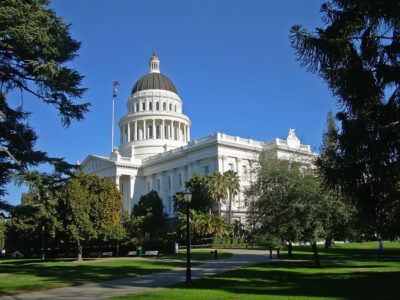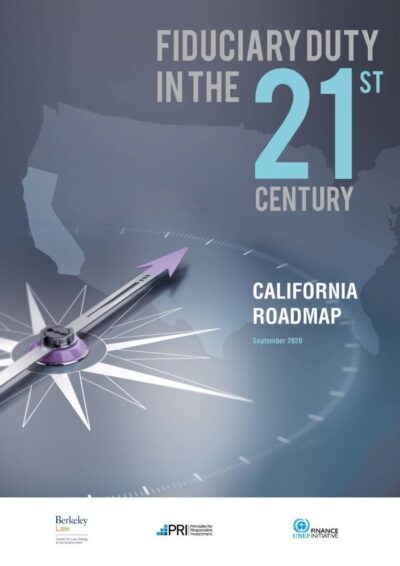Region: California
One More Key Groundwater Bill Just Became Law
Gov. Newsom signs AB 779, which addresses inequities in California’s complicated groundwater adjudication process.
Earlier this week the San Francisco Chronicle declared that California’s legislative session would close with just a single bill addressing injustices in the state’s water rights system. Now you can add one more to the list. Gov. Newsom signed Assembly Bill 779 into law this week. It’s an important step to reforming the state’s murky—often …
Continue reading “One More Key Groundwater Bill Just Became Law”
CONTINUE READINGReading the Tea Leaves: Biden’s and California’s Vehicle Regs at the D.C. Circuit
A leading environmental lawyer gives his perspective.
Transportation is now the source of 28% of U.S. greenhouse gas emissions, more than the electric power sector. The transportation sector is also a substantial source of nitrogen oxides and particulates, both of which are dangerous to human health. The Biden Administration has taken important regulatory actions bearing on these problems, with others in the …
Continue reading “Reading the Tea Leaves: Biden’s and California’s Vehicle Regs at the D.C. Circuit”
CONTINUE READINGAn Important Groundwater Bill Lands on the Governor’s Desk
Guest Contributors Gabi Rosenfeld, Owen McAleer, and Adrianne Davies say AB 779, a bill they worked on with State Assemblymember Lori Wilson, will address inequities in groundwater adjudications.
Earlier this month, California’s Legislature passed a slate of bills that cover a range of environmental and climate issues. Among those was Assemblymember Lori Wilson’s AB 779, a bill we helped create to improve the groundwater adjudication process for all water users. Adjudications legally determine groundwater rights but can take years and cost millions of …
Continue reading “An Important Groundwater Bill Lands on the Governor’s Desk”
CONTINUE READINGNo, There’s No Scientific Conspiracy About Climate Change
Anyone who thinks otherwise has never met a real live academic. We can barely conspire about where to eat lunch.
Among the host of conspiracy theories out there, a perennial one depicts climate science as a global hoax perpetuated by scientists. There are thousands of climate scientists around the world, which is an awful lot of people for a secret conspiracy. But even if there were only forty or fifty, a successful conspiracy of any …
Continue reading “No, There’s No Scientific Conspiracy About Climate Change”
CONTINUE READINGCalifornia is Suing Big Oil Thanks to Journalism
California’s climate and consumer protection lawsuit against Big Oil was made possible by the past work of journalists. What’s the state of climate journalism now?
The state of California has joined the party. By “party” I mean the increasingly ambitious climate liability litigation against Big Oil. And when California shows up at the party, the volume goes way up. There’s already been a lot of smart analysis on the legal arguments (including by UCLA’s Cara Horowitz here). I’d like to …
Continue reading “California is Suing Big Oil Thanks to Journalism”
CONTINUE READINGWhy is there a Carrot Boycott in Cuyama Valley?
Small farmers and rural residents are calling for a boycott against Bolthouse and Grimmway Farms. Here’s what it says about California’s effort to manage groundwater.
When California lawmakers enacted the Sustainable Groundwater Management Act in 2014, it was an effort to tame the wild, wild west of water. Nearly a decade later, there’s been some progress creating local sustainability plans, but Big Ag corporations are still hogging water and bullying smaller groundwater users. Look no further than the fight heating …
Continue reading “Why is there a Carrot Boycott in Cuyama Valley?”
CONTINUE READINGGovernor Gavin Newsom announces he will sign landmark climate disclosure bills SB 253 and SB 261!
SB 261 first proposed and drafted by CLEE Climate Risk Initiative
Breaking news! Governor Gavin Newsom just announced on stage at New York Climate Week that he will sign both of the landmark greenhouse gas emissions and climate risk disclosure bills, #SB253 (Wiener) and #SB261 (Stern), the later of which was first proposed and then drafted by our Climate Risk Initiative at the Center for Law, …
CONTINUE READINGCalifornia Passes Landmark Corporate Climate Transparency Bills
SB 253 and SB 261 would be first-in-the-nation laws meant to pull back the curtain on emissions and climate risks.
After a hard-fought battle, the California Legislature passed the second of two nation-leading corporate climate accountability bills yesterday afternoon. The bills, SB 253 and SB 261, are important transparency measures that would, for the first time, allow Californians to meaningfully assess the carbon footprint of thousands of companies—and what those companies plan to do about …
Continue reading “California Passes Landmark Corporate Climate Transparency Bills”
CONTINUE READINGCLEE-Proposed Climate Risk Disclosure Legislation Passes CA Legislature
SB 261 results from CLEE report recommendation
The California Legislature passed two path-breaking climate risk disclosure bills this week. Both bills now go to Governor Gavin Newsom’s desk where he has until October 14th to sign them. Senate Bill 261 (Stern) requires major corporations to disclose climate change related financial risks, using a framework consistent with that of the Task Force on Climate …
Continue reading “CLEE-Proposed Climate Risk Disclosure Legislation Passes CA Legislature”
CONTINUE READINGHow Major Corporate Fleets Can Drive Responsible and Sustainable EV Battery Supply Chains
New CLEE/Ceres report released today with recommendations for corporate EV fleet managers
The electric vehicle (EV) market is growing rapidly, but with this growth comes public pressure to ensure supply chains for EV batteries are sustainable. The soaring demand for batteries relies heavily on the extraction and refinement of critical minerals, processes that have far-reaching environmental and social impacts. Moreover, the global distribution of these operations leaves …
CONTINUE READING



